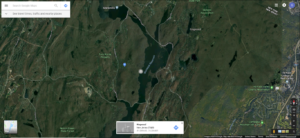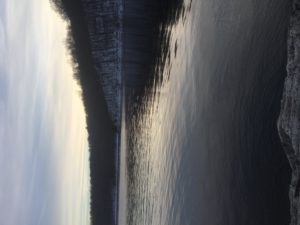As warmer weather approaches, Crescent Beach has continued to undergo many significant changes. The last of the snow melting from the peaks of nearby mountains, complimented by recent heavy rains, has left a lot of the beach submerged in water. In these parts of the beach, there is little activity, however I suspect that as the weather becomes warmer and the shoreline slowly starts to recede, there will be more life in these areas, similar to the type of life that I saw during my first visits here last semester. Tadpoles (with their eggs) and waterbugs should likely start to come shortly. Many gulls, much of which have already been seen around campus and the city, have flocked to the area, as its seclusion makes it a prime area with little disturbance for the time being. In terms of plant life, the shrubbery has once again begun to spring up, and tree buds have even began to take form on the trees surrounding the beach.
Nature and culture seem to intertwine very minimally at Crescent Beach. It is a very secluded area, and even in the summer only a few local residents of the north side of Burlington tend to visit. And these people, living in a more natural part of a city, do a very proficient job of taking care of the area, leaving it mostly as a haven for wildlife. As for myself, I do not really consider myself as part of the area, but more as an observer of what happens in the area. And I prefer it that way because I enjoy the idea of my phenology site being, for the most part, untouched
From start to finish, it was very rewarding to see how much a single area could change simply due to seasons. Moving forward, I hope that I will periodically be able to visit again during my very busy sophomore year. During these visits, I hope to reobserve the beautiful progression that I have witnessed throughout my freshman year at UVM. Till next year.
Greg Martin








Recent Comments